First Drive: The new Toyota Supra is here to establish its own legacy
The Toyota Supra finally returns, but can it live up to the weight of expectation on its shoulders? Ryan Hirons finds out

What is it?
After years of will-they-won’t-they rumours, concept cars, teaser images, prototypes spied at the Nurburgring and sheer hope of enthusiasts, the new Toyota Supra is finally here. And that headline isn’t deceiving you – we’ve driven it.
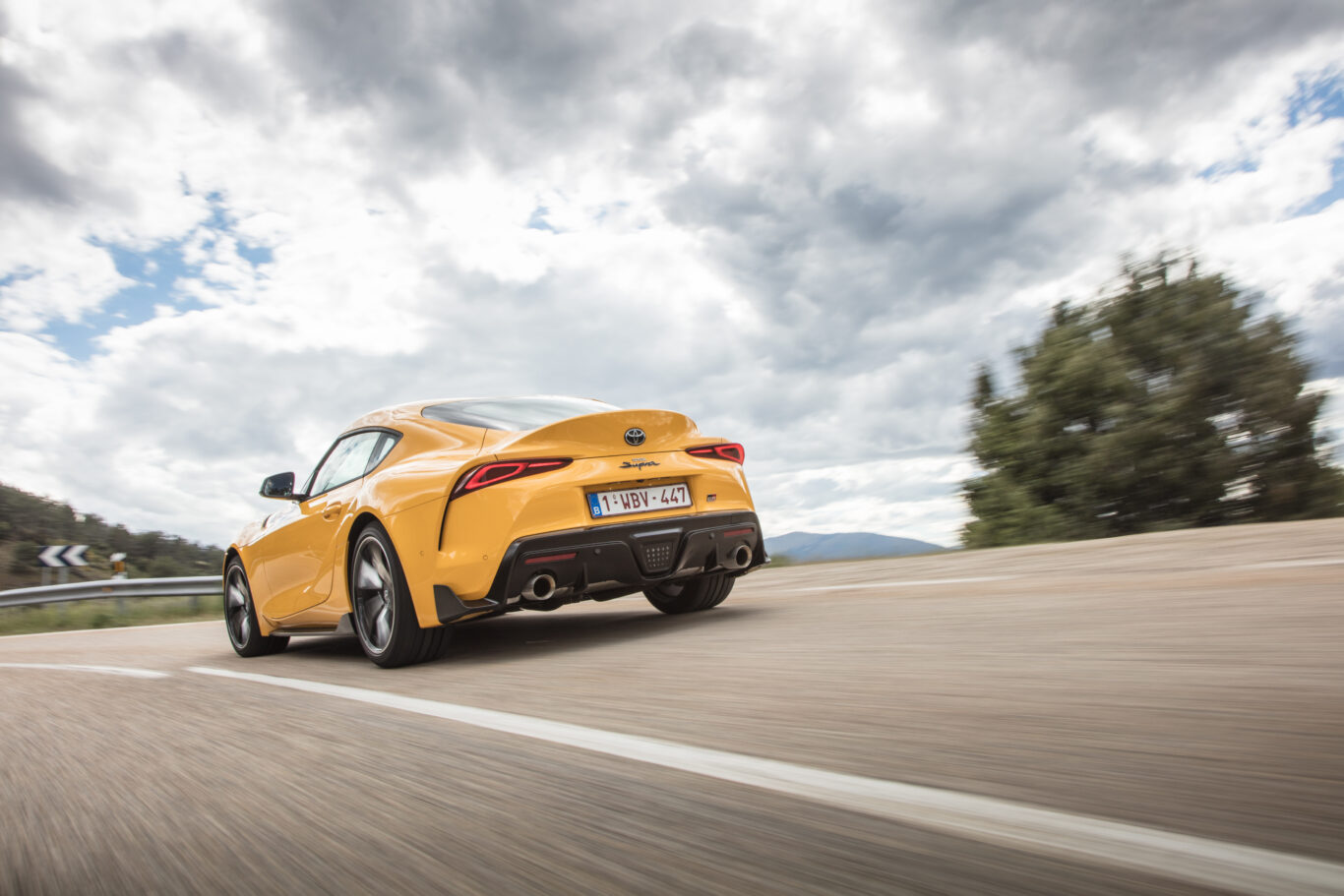
Calling this car the most anticipated vehicle of the decade wouldn’t be an overstatement. After all, this is the revival of a hugely-loved sports car that last saw the light of day in 2002. However, it isn’t without its controversy, with this Supra co-developed with BMW — news of which hasn’t been received well in some corners of the motoring world. Does the car live up to the hype though, or is not so Supra after all? We find out…
What’s new?
Some will call this a BMW in drag, and there is some merit to this claim. Under its Toyota-designed skin is the same platform as the BMW Z4, with the 3.0-litre engine brewed from the German pot rather than being whipped up in Japan.
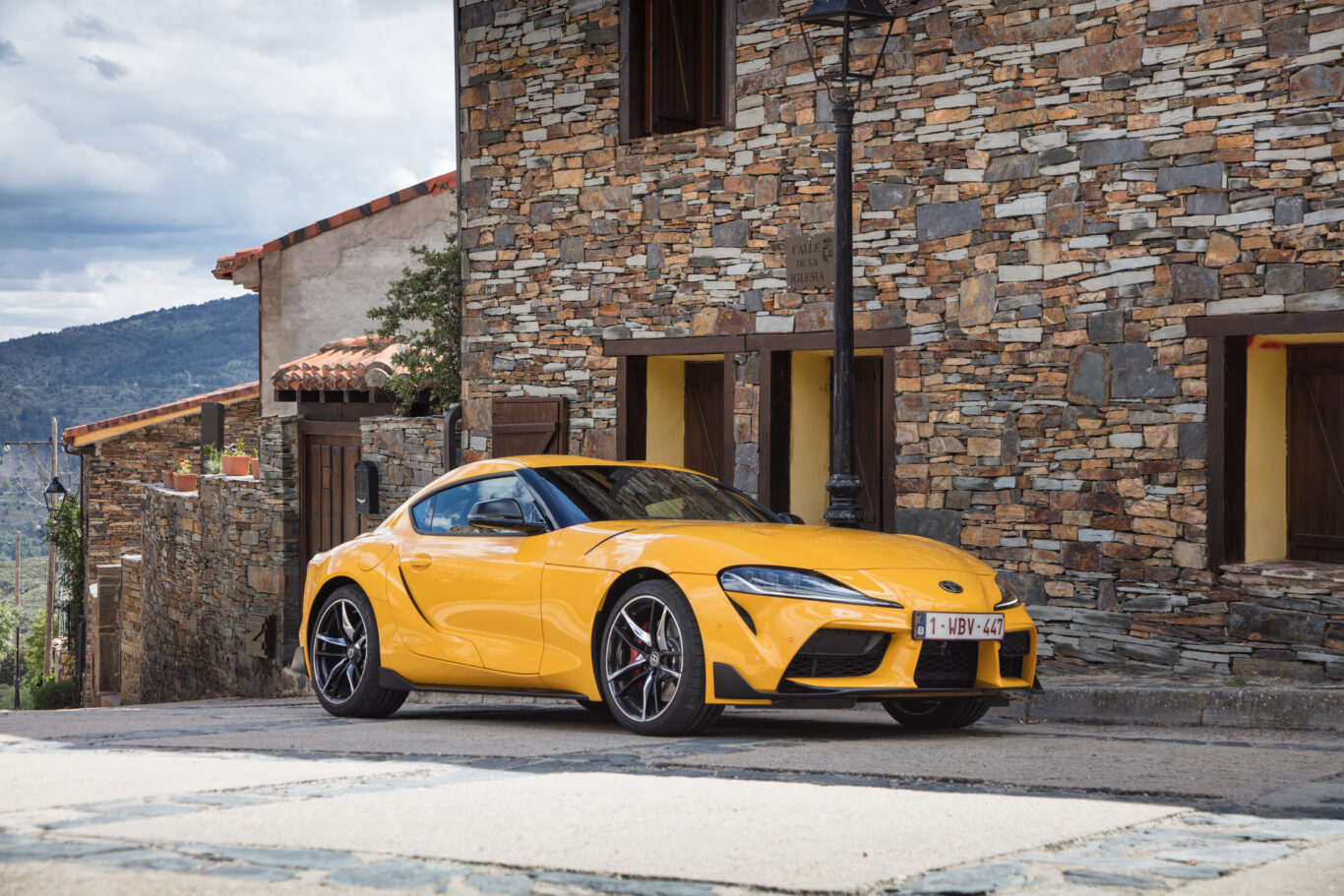
There’s even a hint of BMW inside too, with the switchgear and the infotainment system lifted from its parts bin to be used here (though, this is no bad thing…). Don’t write it off as a Z4 clone just yet though, as Toyota says it has brought its heart and soul to the formula.
What’s under the bonnet?
That BMW powerplant is the same you’ll find in any ‘40i’ denoted vehicle it offers, though it does conform to the six-cylinder formula every Supra to date has boasted. The 3.0-litre, straight-six sends 335bhp and 500Nm of torque to the rear wheels via an eight-speed automatic gearbox (sorry, no manuals here), with the result a 0-60mph time of 4.1 seconds and a limited 155mph top speed. In terms of efficiency, Toyota claims it will return 34.5mpg while emitting 170g/km in CO2 emissions.
The powertrain’s reputation as crisp and smooth unit is again proven here, with consistent power delivery across the rev range, and there’s barely a hint of turbo lag here. That said, the ZF gearbox can be a little bit hesitant at lower speeds, and there’s far too much in the way of artificial engine noise.
What’s it like to drive?
Toyota has claimed this Supra boasts a ‘Golden Ratio’ in terms of length to width, and that having almost box-like proportions allows the car to be one the best-handing on the market. Thankfully, this proves true.
It skips and prances along back roads with the poise and balance of a ballet dancer, feeding sensations from the road to the driver’s backside and fingertips in a way very few modern mainstream cars can manage. Its steering is sublimely well-judged, and the car does a great job of hiding its relatively high 1,815kg kerb weight.
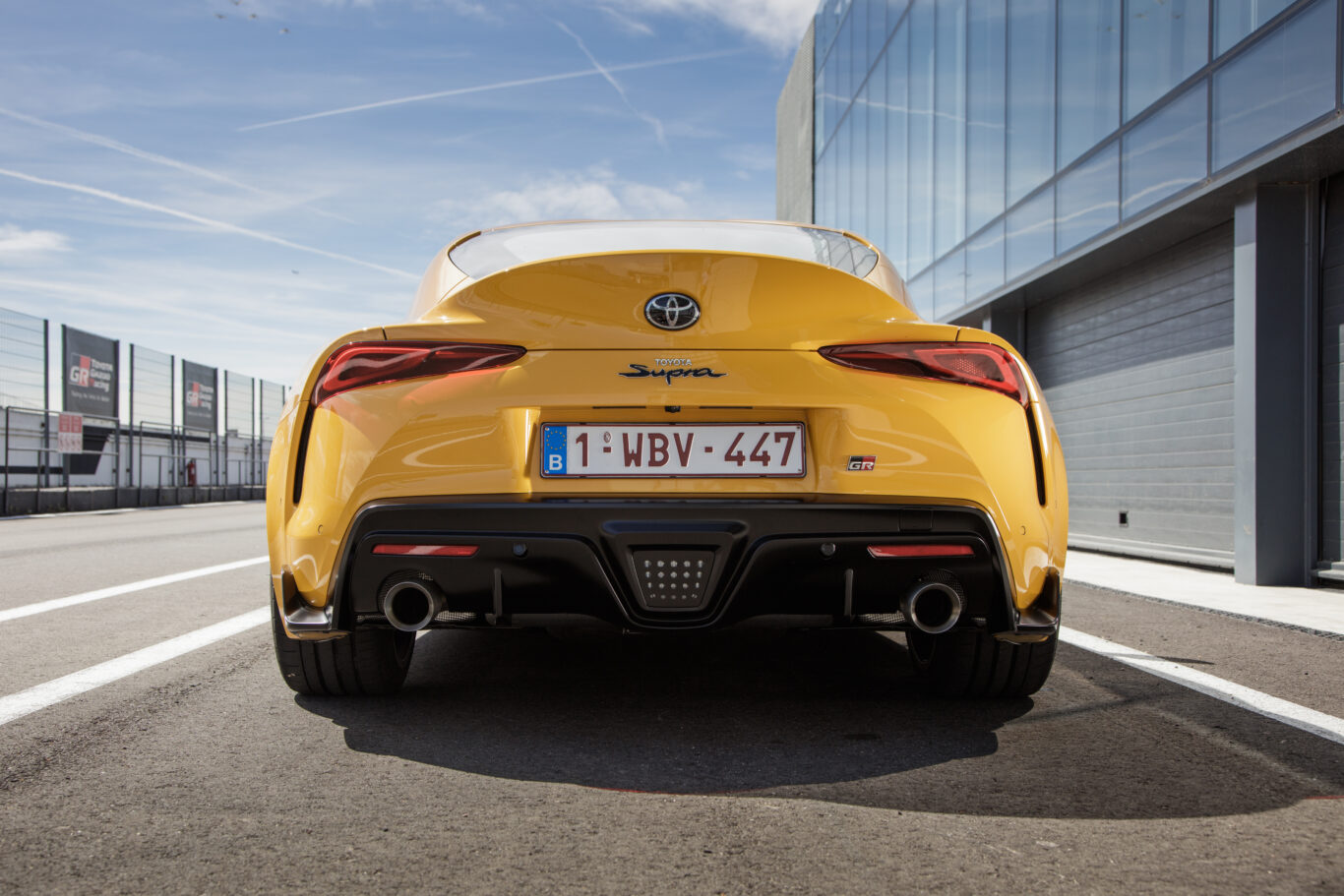
Better still, it proves to be comfortable and refined when used on longer runs too. There’s a real sense you could effortlessly cover 200 miles of motorway in this — something many sports cars couldn’t claim.
How does it look?
The classic sports car formula is represented in the Toyota Supra’s design. Its long bonnet, short rear overhangs and low-slung cockpit hark back to an era of British classics in the ‘60s and ‘70s. It does bring a modern twist to that formula though, with angular taillight design, air vents everywhere and a front fascia that looks lifted from a UFO spaceship. It is undoubtedly a head turner, though from some angles the spacecraft design details come across as awkward.
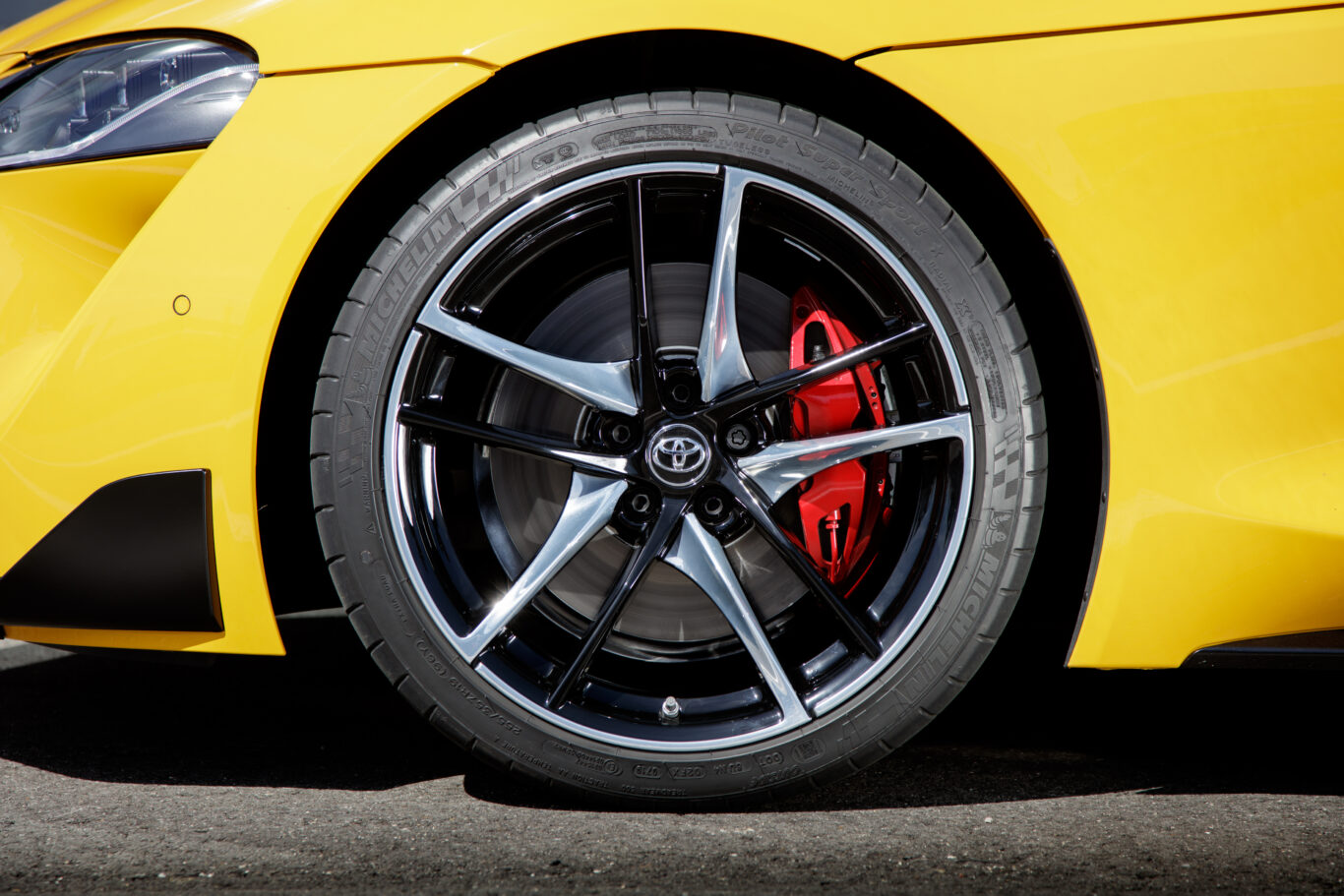
If it was our money, we’d be spec’ing the Supra in yellow, which really brings the cars’ sharp details to life.
What’s it like inside?
We’ll swing back to the BMW partnership here, which is hard to ignore once sat in the car. All of its controls, dials and even the iDrive infotainment system are lifted from the German firm’s parts collection. This is far from a bad thing, as it’s much higher quality than anything Toyota produces at the moment, though it does falter in terms of character.
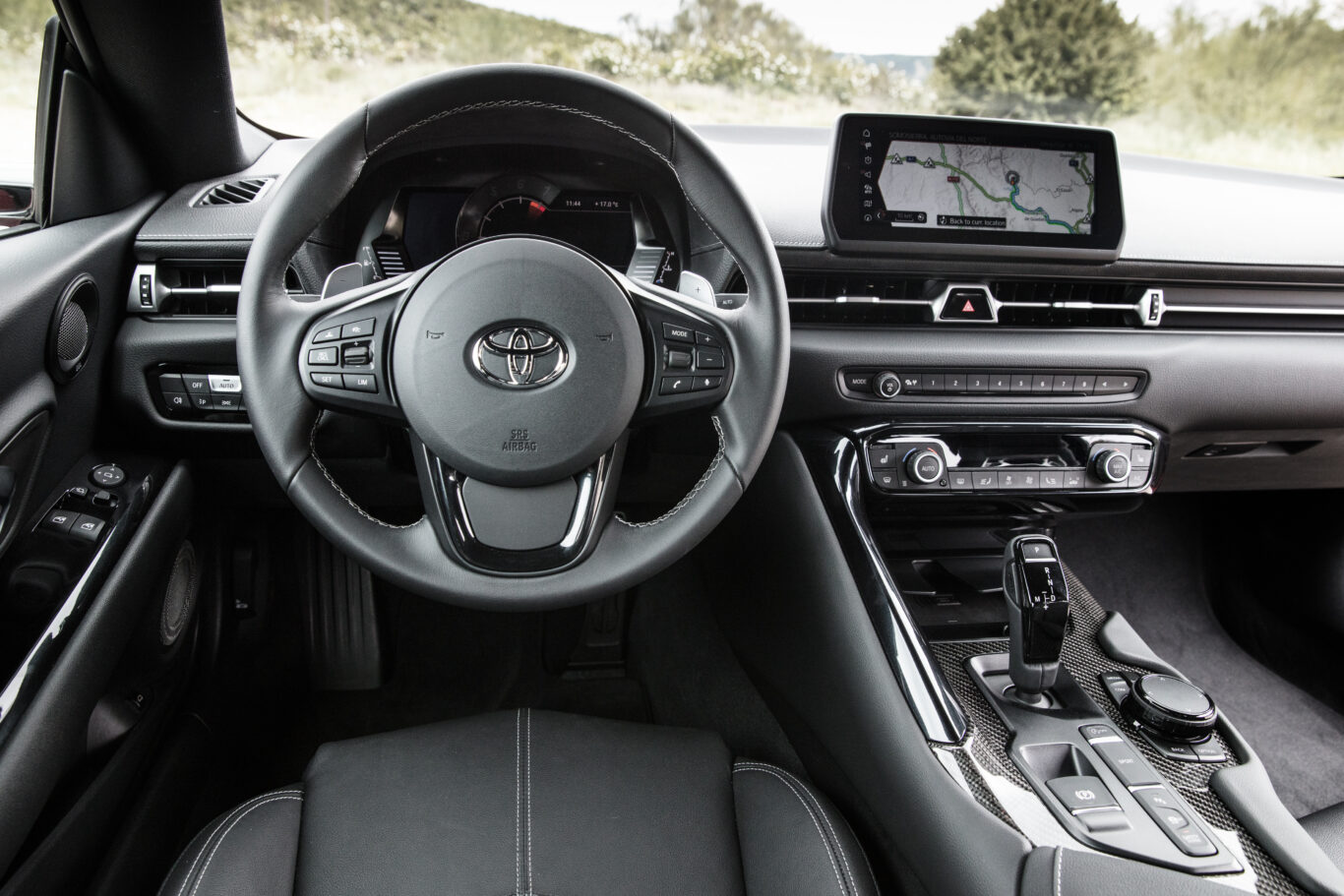
There’s no escaping the lack of space either. Of course, low-slung sports cars are never going to be the most capacious of machines but the Supra’s cabin feels particularly tight — and may prove a struggle to get comfortable in for taller drivers. In terms of boot capacity, it boasts a respectable 290 litres.
What’s the spec like?
Pricing for the Toyota Supra begins at £52,695, putting it above key rivals in the Alpine A110 and Porsche 718 Cayman. That said, it does come with a fairly comprehensive list of kit.
Luxury items include 19-inch alloy wheels, dual-zone climate control, adaptive cruise, keyless entry, a digital instrument cluster, adaptive LED headlights and the BMW iDrive-based infotainment system displayed on an 8.8-inch screen. ‘Pro’ grade builds further on this with black leather upholstery, a 12-speaker JBL sound system, wireless phone charging and a head-up display. Toyota reckons this will be the big seller in the UK, with a £54,000 list price.
It’s arguably a high starting price, though it clearly hasn’t put customers off so far — with all 300 examples destined for the UK in 2019 already accounted for.
Verdict
Doubts over the success of the Toyota Supra aren’t short in number. Having the legendary ‘A80’ Mk4’s boots to fill has put a lot of expectation on its shoulders, and many are sceptical over the BMW connection.
However, the new Supra is surely set to create its own legacy. It delivers its own unique driving experience that is one of the best delivered by any modern sports car, and co-development with BMW has served the car well in all the right areas.
That said, there’s definitely a feeling its engine could take a little more power onboard, plus a manual gearbox and a better exhaust note while we’re on that topic…





